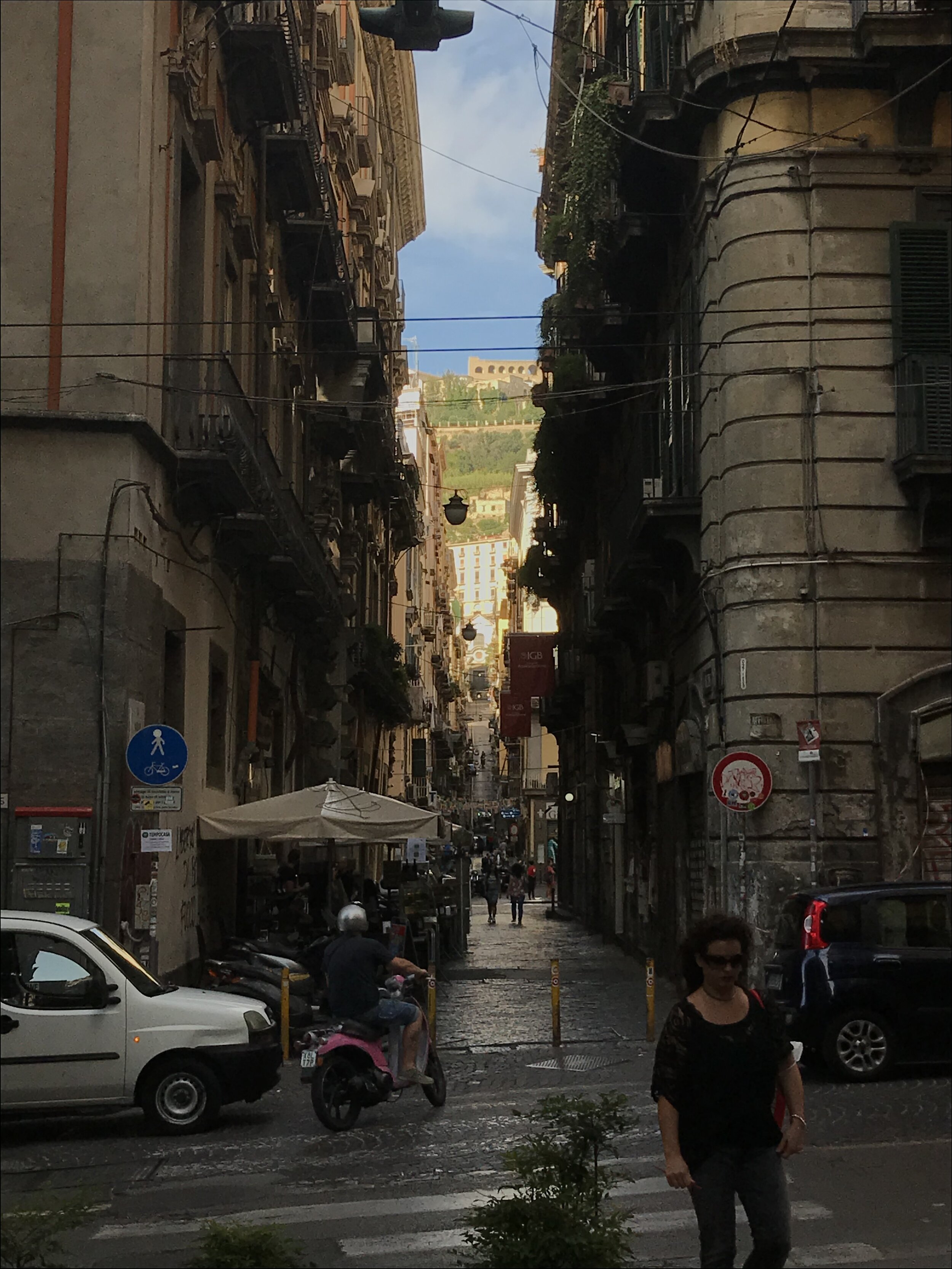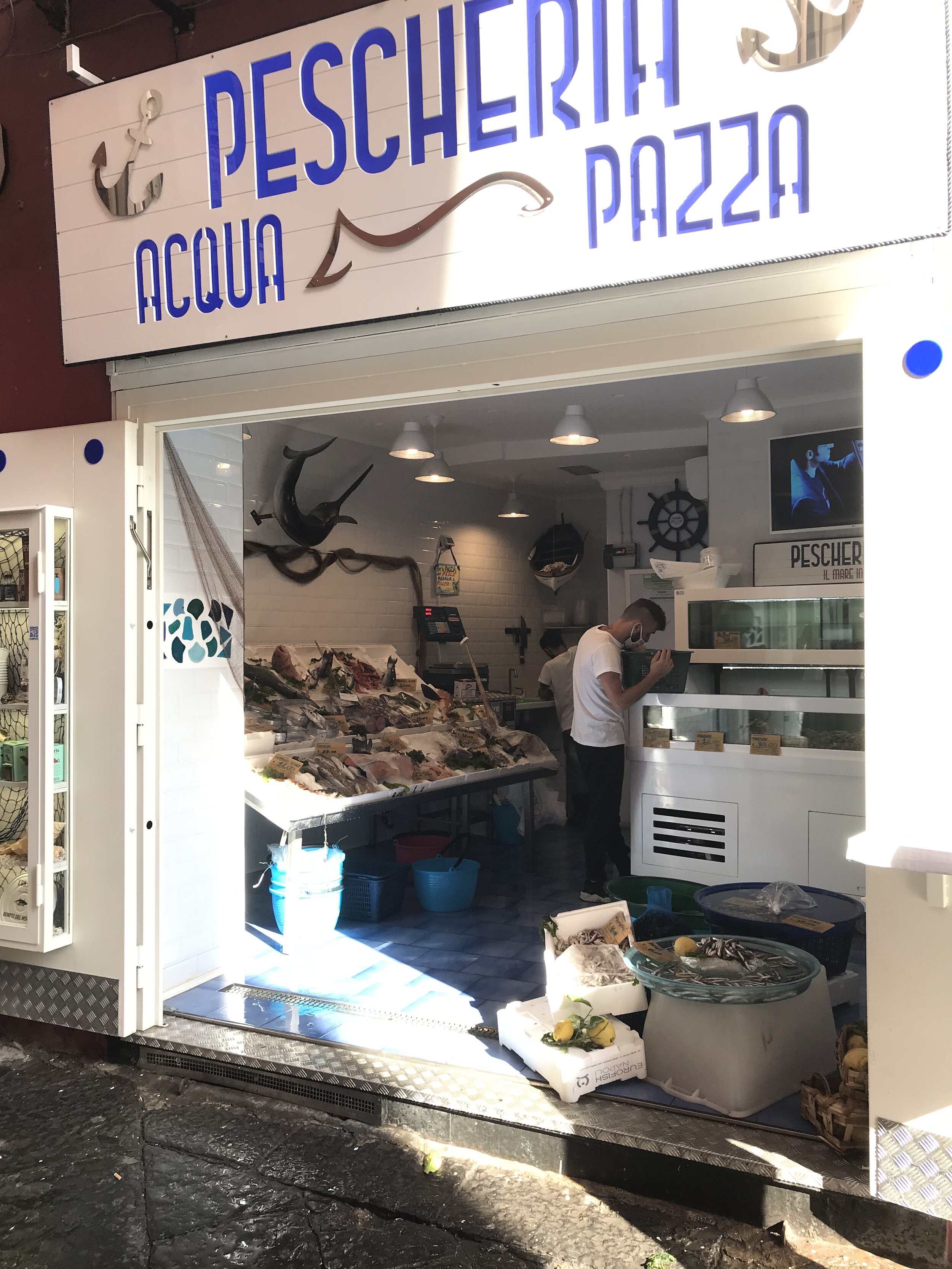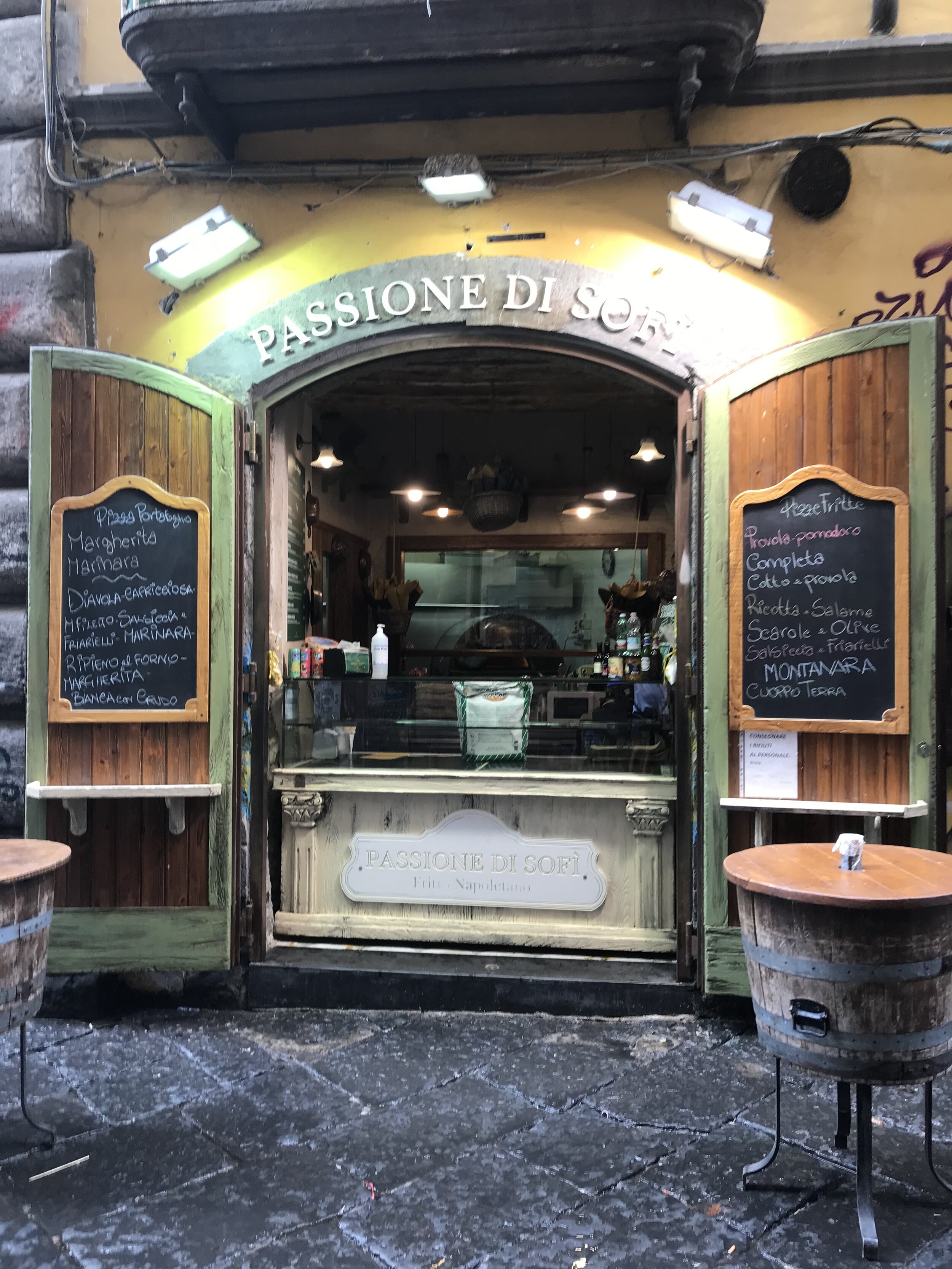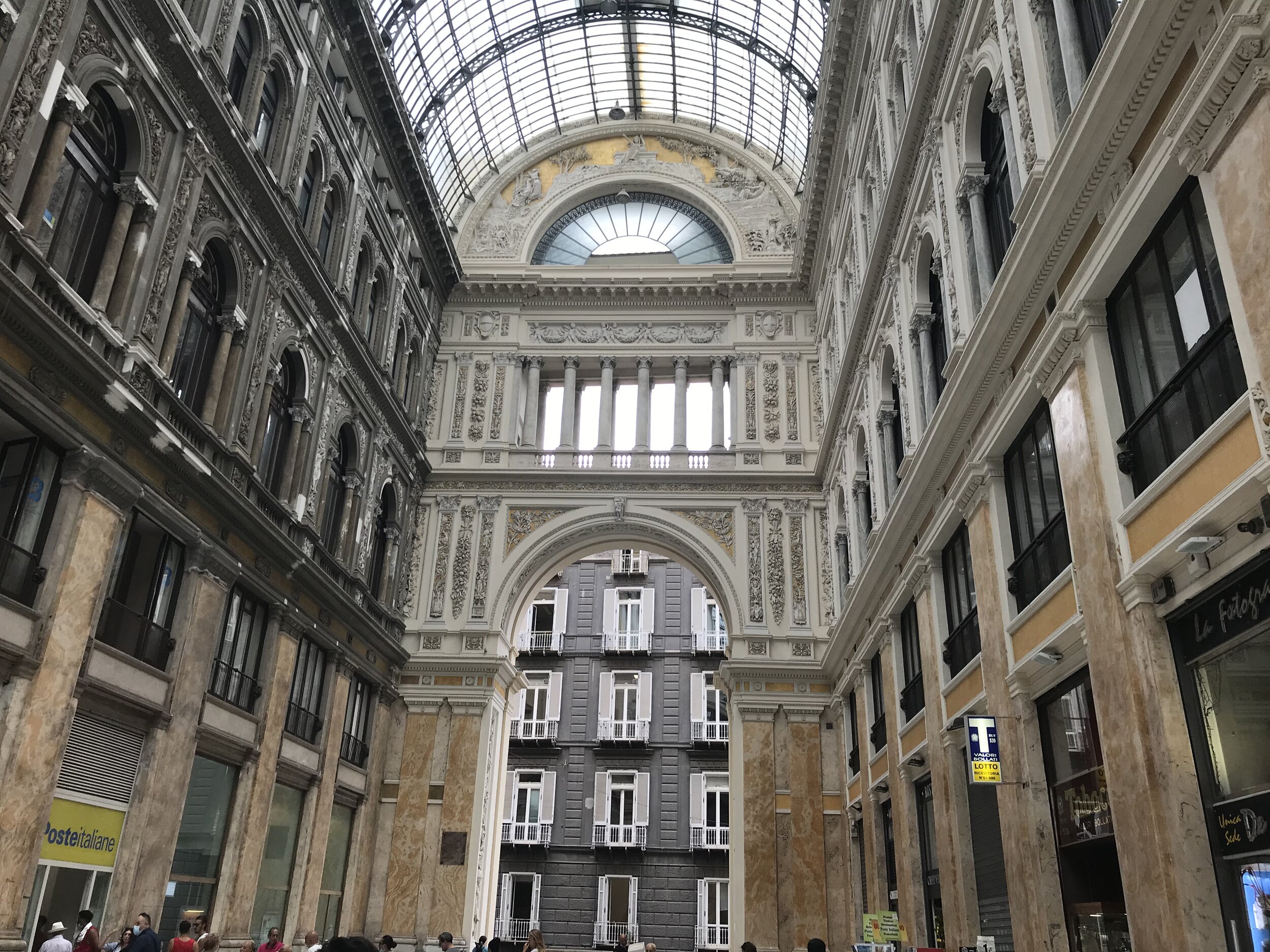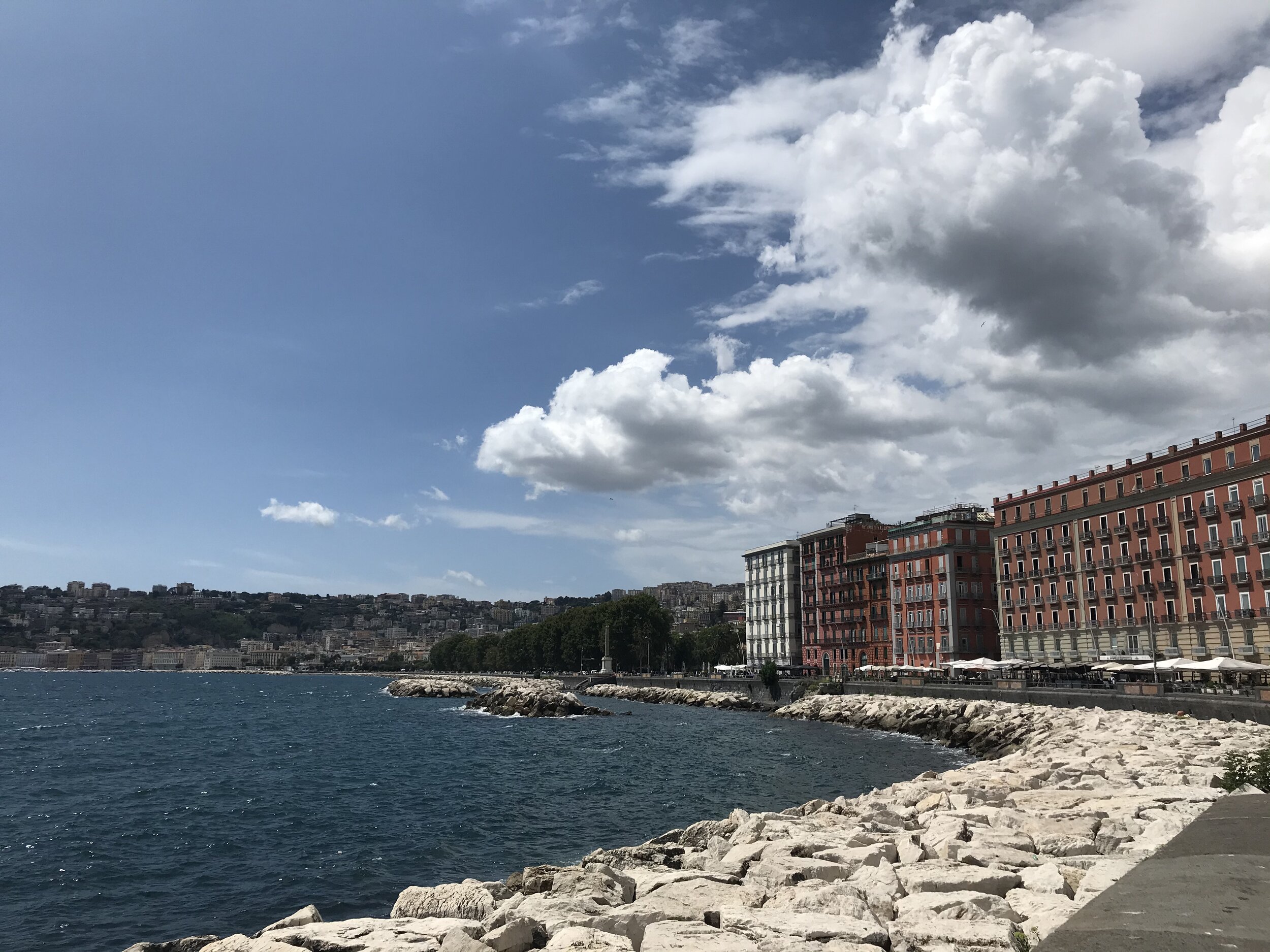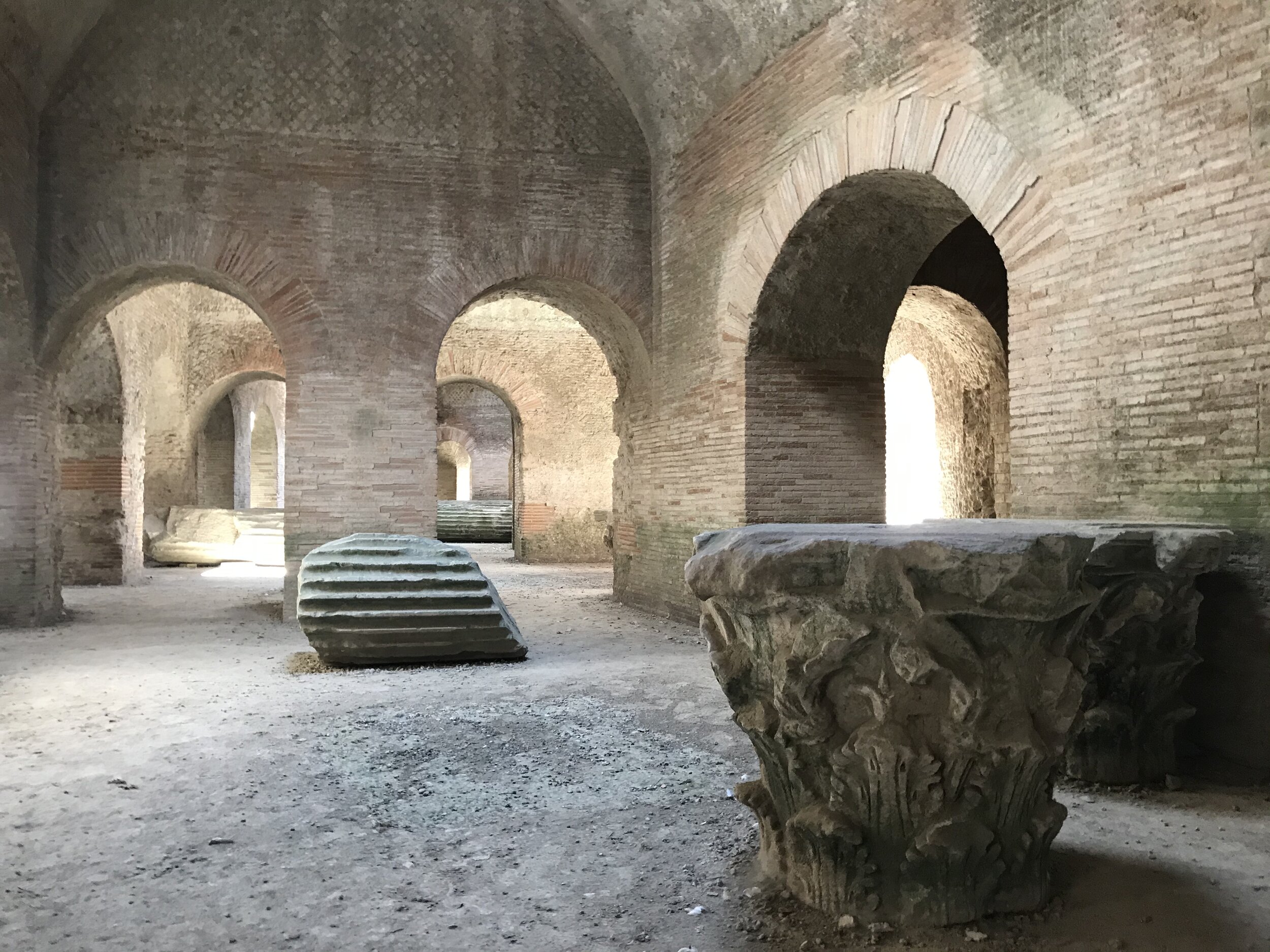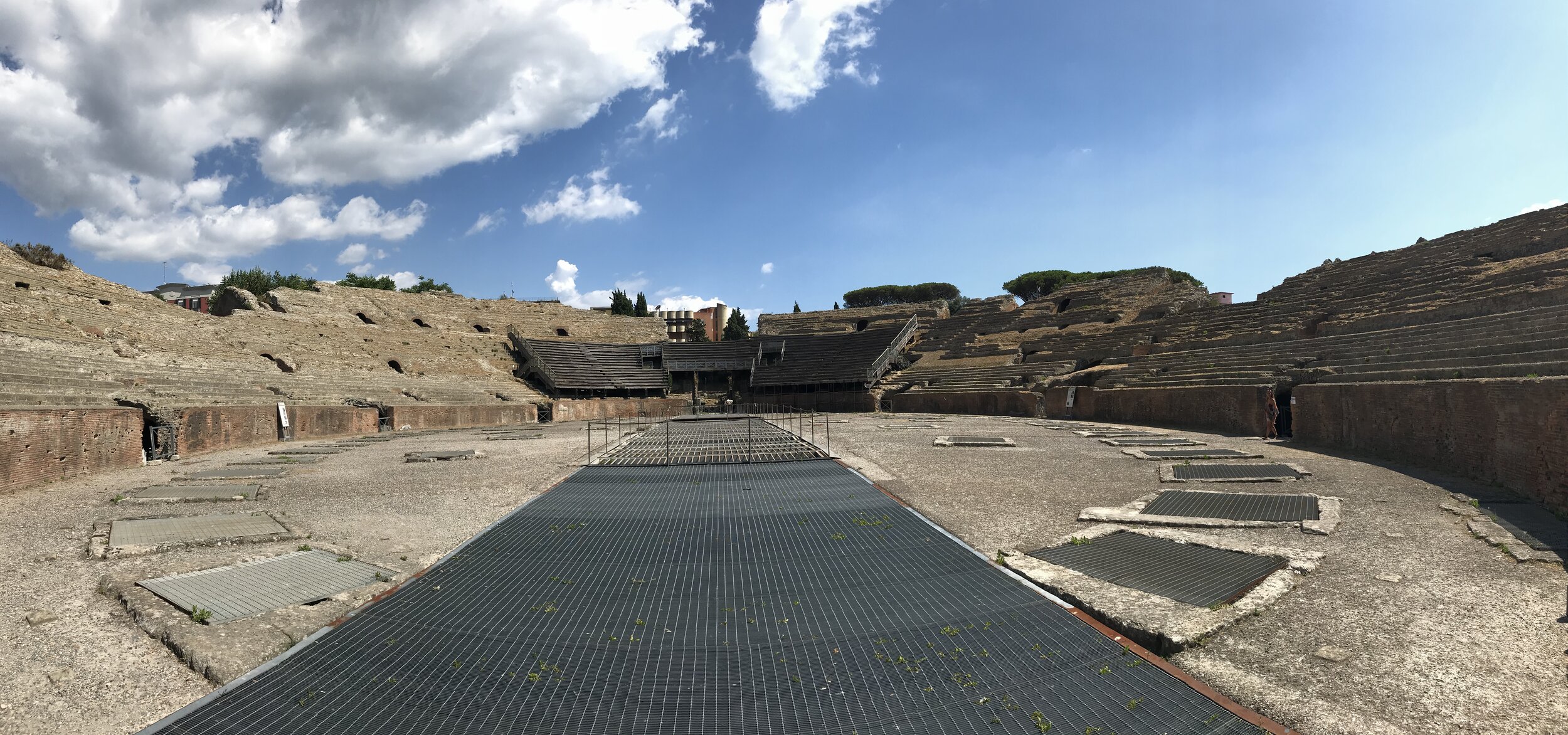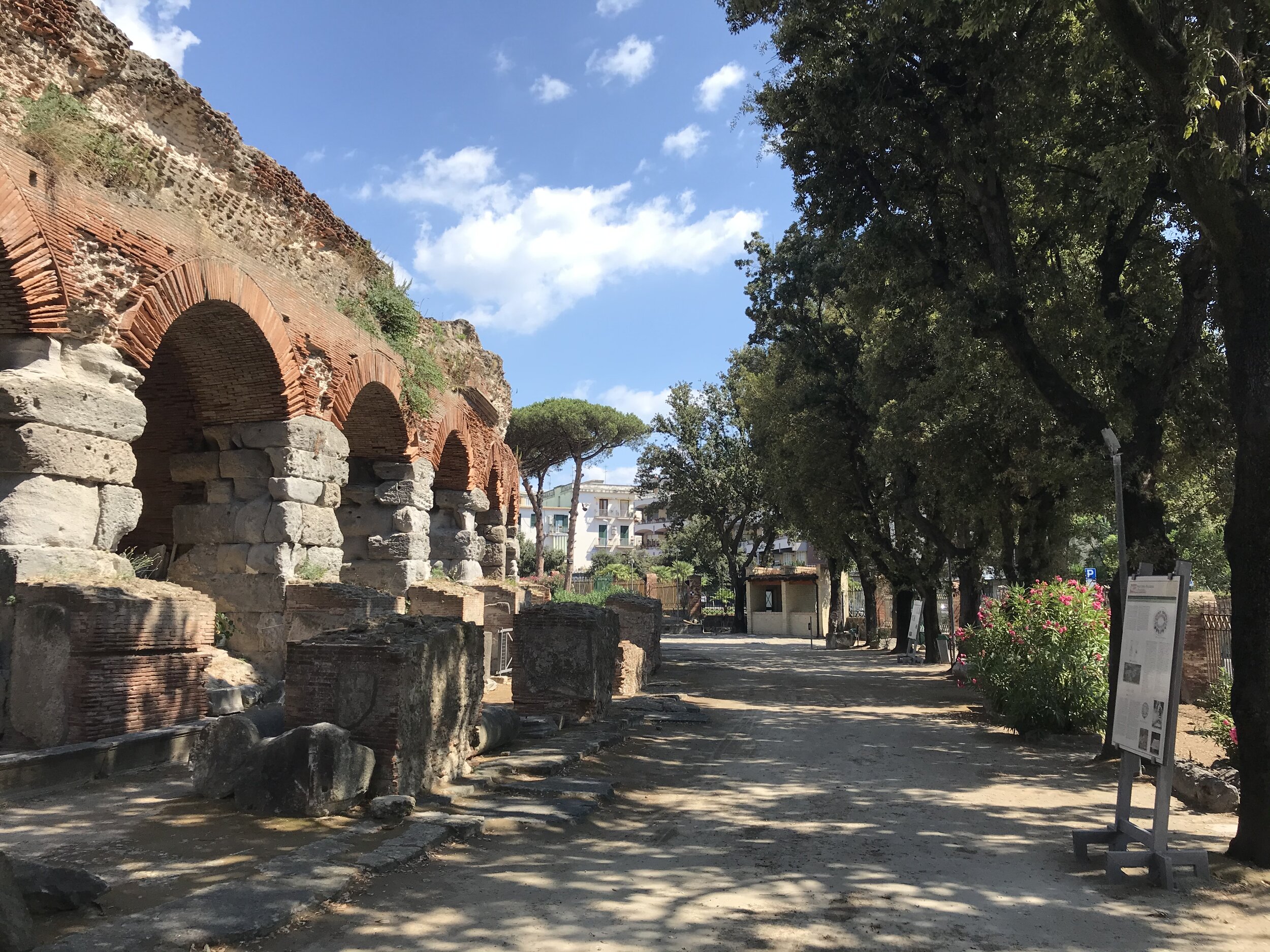It was on August the 4th that my future fiance and I traveled from our home in Lombardia to arrive in Naples, called Napoli in Italian, for a four day vacation. While Venice was the first major city that we went to together, it was only a 24-hour spur of the moment occasion. Since that period in February, the answer to every question like…
“Where is the best mozzarella? Where are the best tomatoes? Where would you prefer to live? Who makes the best deserts? Where is the best produce?…..”
..was always “Napoli”. And so it was only natural it would be the site of our next trip together.
PICTURED: Sunrise over Napoli’s Vomero neighborhood, where a broad set of stairs will take you hundreds of meters down to the city.
Way down near the toe of Italy, Naples has been a place that Mara, my fiance, has wanted to go for months. It has everything the American image of the Italian loves, such as eating tomatoes and turning the collar on his polo shirt up and leaving it there. Also there’s sun, salt air, beaches, pizza, lemons, and more. In terms of architecture there are beautiful Franciscan and Catholic churches, classic Napoleonic apartment units, three Renaissance castles, and the surrounding islands and communities are equal parts Santorini-like stacked colored buildings with a hundred thousand snaking stairways around, along, and behind their pink, mint green, blue, white, and yellow washed-stone facades. The people speak Italian the way New Yorkers speak English, and the way Italian New Yorkers speak Italian words in English (see “gabish” instead of “capisci”).
In an article I’ve already written on Napoli this week, I described it as a delicious, colorful, exciting, yet tired old city. The infrastructure seemed older than almost any I’ve seen since being here. The first thing I noted was a cast iron peg the size of a medicine ball meant for tying off large boats as they entered harbor, which looked as if it had been 25% larger when it was new, but simply sloughed away over decades of use. The next thing I noticed was after I jumped into the volcanic-black waters off the island of Procida, and looking at the sea cliffs upon which rested a staircase in front of a small street. The stratification was like looking at the wall of the Grand Canyon of the Colorado, but instead of geological eras, it was contemporary historical eras – from the Greeks to the Romans, to the Spanish, to the kingdom of Napoli to the country of Italy. Finally, when we took the funicolare up to Vomero station on the mountain overlooking the city, we walked down hundreds of stairs – a proper pedestrian walkway – until we reached Spaccanapoli or “The Naples Split” a long road that pierces several important quarters of the city, along which I saw stained, broken, exhausted infrastructure that like an old man who refuses on principle to buy a riding lawn mower, showed absolutely no sign it would retire any time soon. The lights have to be on, the water has to run, and being a plumber or electrician in the center of Napoli must be like trying to win a curling match on Omaha beach in early June 1944.
Mara and I arrived with the sun, and walked down the old streets which were covered in the evidence of partying youth. I couldn’t believe what the young Napoletani do to their preferred parts of the city as every crack in the paving stones was filled with glass shards and plastic, as if their old city was the floor of a fraternity house. In that otherwise lovely and quiet neighborhood, the wide staircase that served as a commuter walkway was riddled in garbage, and the houses which stood tucked into the steep hillsides were often covered with graffiti, which Mara and I agreed would the catalyst for losing your hands if you tried to do that on the side of our house.
Alongside Spaccanapoli, the street vendors were opening their stalls and small arcade shops waiting for presumably local shoppers to come buy fresh pasta, freshly baked bread and pastries, the catch of the ocean, and more. I imagined it as their favorite time of the day, as it would be when the locals and their friends come to buy, while the tourists like me had yet to arrive. I took pictures of some of these shops quickly, so as not to disturb their morning routines which, as a once dedicated 6am-3pm employee, I understand is often the key to getting through the day with minimal complications.


Without going so much into detail, the rest of the day was just spent seeing beautiful stuff and eating amazing food. In Piazza San Domenico, we had the best coffee in Napoli, i.e. the best coffee in Italy I suppose, at Santurchio, which in terms of the important cafes in the city still retains modest pricing, whereas Caffe Grimaldus in Piazza Plebiscito is outrageously expensive.
There’s so much to see along Spaccanapoli, but if I had to recommend one sight in particular, it would be the result of the urging of my fiance to see Chiostro Santa Chiara, or Saint Claire’s Cloister, a very unique religious site where monks and nuns of the Franciscan order would meditate, garden, and paint. The last part is important, because the tile-paintings which line the benches are unlike anything I’ve seen in religious art – tranquil, beautifully simple and allegorical at the same time, the wash of yellow and green triggers the brain’s serotonin receptors hard, and you’ll end up longing to take a walk down country lanes next to fields of summer wheat. It’s not so expensive either, as compared with Napoli subterranean, or Capella San Severo. Further down the road we exited into the open air as we neared the sea, and our eyes fell upon the magnificent Castel Nuovo, Piazza Plebiscito, Galleria Umberto I, and the Lungo Mare or “Long Sea Road” (which in Los Angeles would be called the Strand,) on which sits the confusingly-named Castel dell’Ovo, – all wonderfully beautiful places which any seasoned European traveler will come to expect from Europe’s great cities – and which are pictured in the order listed above, enjoy!
There’s a lot you can read about Napoli, and in many ways it’s contributed way more than usual to Italian culture with everything from cuisine, to language, to the “caffe sospeso” tradition, and it would be difficult for me to add anything that hasn’t been said already, so I want to move on to a small coastal neighbor of Napoli called Pozzuoli, where we stayed for the nights. Pozzuoli is a fantastic little city that I found, when I was doing my keyword research for the article, practically doesn’t exist in the mind of English-language googlers. I believe that must be corrected, because Pozzuoli is all the best parts of the Napoli cultural experience, without the downsides of the trash, the chaos, and the downers of a major city, as Pozzuoli is clean of air and pavement, and filled with friendly Napoletani who left the big city for peace and quiet. I recently wrote a long destination piece for Pozzuoli which you can find here, if you want to know more, and I won’t go over anything else other than my experience in the Roman amphitheater.
“While the Colosseum stands, Rome shall stand; when the Colosseum falls, Rome shall fall; when Rome falls, the world shall fall.” – Venerable Bede.
The grand Flavian amphitheater in Rome, known as the Colosseum, which was basically street directions that meant “By the Colossus” referring to the giant statue of Nero, is one of the great architectural wonders of the classical era, but unless you’re visiting it during the COVID-19 pandemic, your tour of the arena will be marred by the fact that there will be at least 1 third of all the humans on earth stuffed inside of it, taking pictures and selfies next to every statue.
In contrast, the Flavian amphitheater in Pozzuoli, the third largest in the Roman world, was silent but for our footsteps and the breath of two thousand years of history. After being grimly informed we had to pay the full ticket price (4 euro) we alone entered into an immaculately-preserved slice of Roman society, built out of bricks that were in better shape than some in the buildings along Spaccanapoli. Under the arena, we walked through 3 subterranean arcades of brick arches containing around 40 little chambers where gladiators, prisoners, animal cages, and merchant provisioners would have stayed. One could imagine the noise – Christians like San Genaro, patron saint of Pozzuoli, praying as they were sentenced to fight and die in the arena, while merchants offered spectators walking to their seats a jar of wine or a crust of bread. Lions, hippos, and other animals would be rattling the bars of their cages, feet moving in deadly combat would shake the wooden boards which covered the elevator shafts in the arena floor and send dust swirling through slim sunbeams peeking through the cracks, and the noise of thousands of people would create a great hum through the arcades. When one is alone, these ghosts of the past whisper to you as you walk by. However when one is distracted by 30 Chinese tourists taking selfies, these same ghosts lie silent.
Take a moment, before I make my final point in this article, to think about all the ways in which Roman history pervades our culture. In school we learn about their buildings and their empire, we study their philosophers before any others, and alleged quotations from their leaders are still recited today. On television and on stage we are inundated with Roman life – from Shakespeare’s Julius Caesar, to HBO’s Rome, and a hundred other films and television shows that have produced such famous script lines as “Cry havoc, and let slip the dogs of war,” or “I am Spartacus!” or “Are you not entertained?” In my home of Washington D.C., the buildings of the federal departments are constructed of marble and stone in effigy of the buildings along Rome’s Forum, and in churches and other public buildings we can still see Roman artistic design.
All of this came from a civilization that began 2,300 years ago, and when one passes by a Roman ruin, we are reminded how powerful and advanced they were, since their monuments still survive today, but also just how long ago that really was. As a thought exercise, name one other contemporary civilization to Rome that has a television show. You may quickly realize that you don’t know of any contemporary civilizations, and you’re not alone. No script writers or architects are basing their creativity around Carthage, or Parthia, or the Nervii, or the Gallic tribes, or the Etruscans, or the Cappadocians, or the Visigoths, or the Vandals, or the Huns.
Even legendary Egypt in this period is only illuminated by the light of history due to getting the “rub” from silver-screen hero Julius Caesar, and while there is a famous opera by Verdi called “Attila” about the Hunnic wars against Rome, it’s still told from the viewpoint of the Romans.


